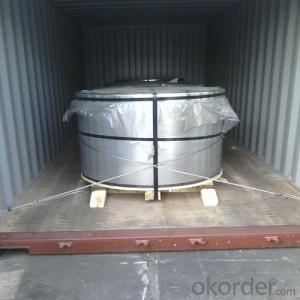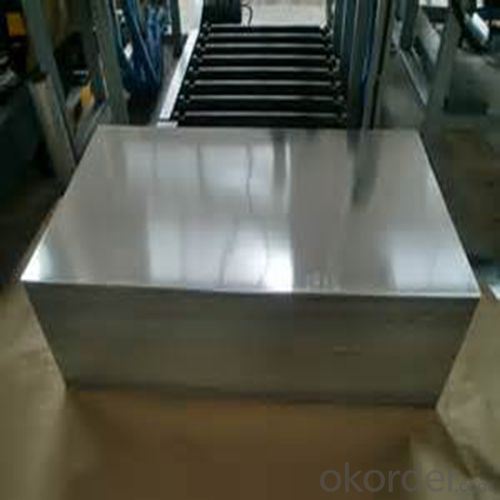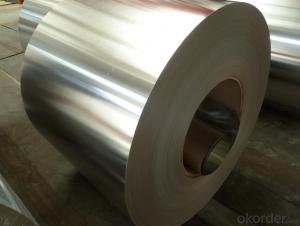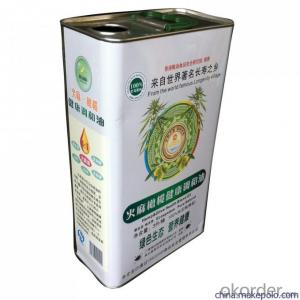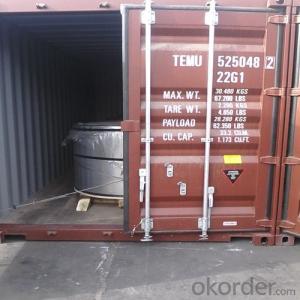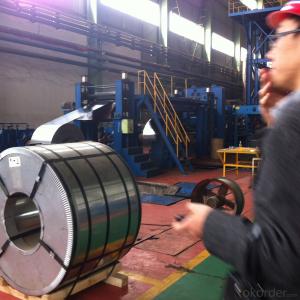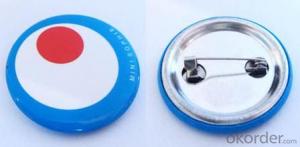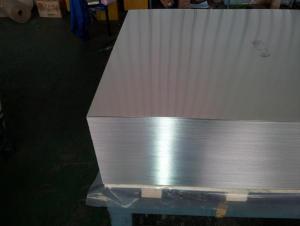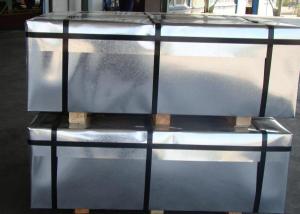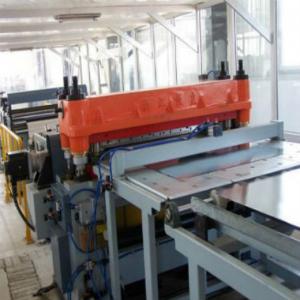Prime Quality Tin Free Steel for Metal Caps
- Loading Port:
- Shanghai
- Payment Terms:
- TT OR LC
- Min Order Qty:
- 25 m.t.
- Supply Capability:
- 25000 m.t./month
OKorder Service Pledge
OKorder Financial Service
You Might Also Like
Specification
1.Structure of Prime Quality Tin Free Steel for Metal Caps Description
Tin mill products include electrolytic tinplate, electrolytic chromium coated steel(also referred to as tin free steel or TFS), and black plate, the uncoated steel. Tinplate is a thin steel sheet coated by tin, while TFS is an electrolytic chrome plated steel consisting of a thin layer of chromium and a layer of chromium oxide deposited on the steel base. Both of them have a beautiful, metallic luster as well
as excellent properties in corrosion resistance and paintability.
2.Main Features of the Prime Quality Tin Free Steel for Metal Caps
Chromium coated
Sulphur Blackening Resistance: TFS has sulphur resistance properties, which can be used for canning protein- rich food such as fish.
Filiform Rust Resistance: Filiform is superficial corrosion of the base metal. TFS has a superior base metal which makes it corrosion resistance.
Coating: The coating in TFS is not amphoteric (having the characteristic of an acid and a base, is a compound that can react as either an acid or a base). This means that detergents and dispersion colors can be packed easily.
3.Prime Quality Tin Free Steel for Metal Caps Images
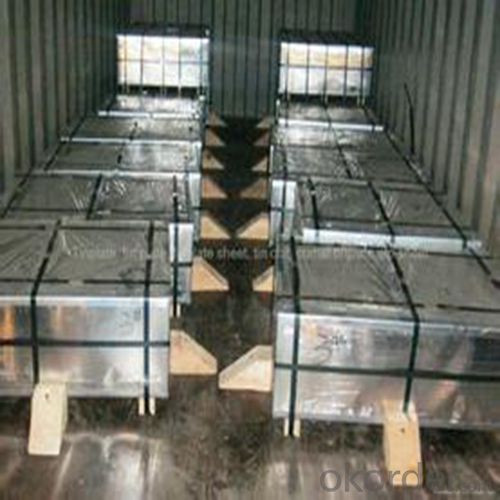
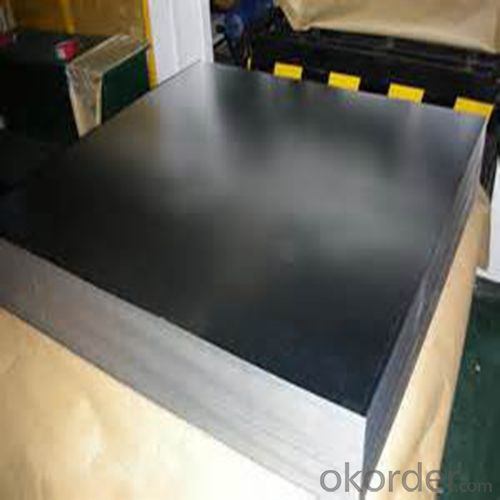
4.Prime Quality Tin Free Steel for Metal Caps Specification
Thickness 0.14mm to 0.35mm
Width 500mm to 1200mm
Length : As per customers specification
Temper : T1 to T5, DR 7 to DR 9
5.FAQ of Prime Quality Tin Free Steel for Metal Caps
-What is MOQ?
Our MOQ would be 25 tons.
- Do you only have prime quality TFS ?
We can supply both prime and second quality TFS.
- Q: How is tinplate coated for promotional items?
- Tinplate is typically coated for promotional items using a process called electrolytic tin plating. This involves immersing the tinplate in an electrolyte bath and passing an electric current through it. The electric current causes tin ions to disperse onto the surface of the tinplate, creating a thin layer of tin coating. This coating provides protection against corrosion and enhances the aesthetics of the promotional items.
- Q: What kind of metal material is tinplate? How much is the current price per ton?
- In seventeenth Century, Britain, France, and Sweden all wanted to build their own tinplate industry, but they needed a lot of money. Therefore, the delay has not been developed. It was not until 1811 when Brian Donkin and John Hall opened tin canned food that tinplate was developed on a large scale. Now the whole world annual production capacity of 250 thousand tons more than 1/3 cieux, used in the manufacture of tinplate, which are mostly used in canned food industry.
- Q: What are the safety regulations for using tinplate in toys?
- The safety regulations for using tinplate in toys typically involve compliance with relevant international safety standards. These regulations ensure that the tinplate used in toys is free from hazardous materials, such as lead or other toxic substances, and that it meets specific safety requirements, such as resistance to sharp edges or choking hazards. Compliance with these regulations aims to protect children from potential harm or injury while playing with tinplate toys.
- Q: Are there any limitations to using tinplate packaging?
- Yes, there are several limitations to using tinplate packaging. Firstly, tinplate packaging is relatively expensive compared to other packaging materials such as plastic or cardboard. Additionally, tinplate packaging is heavier and bulkier, which can increase transportation costs. Tinplate is also more susceptible to corrosion, especially in high humidity or acidic environments. Lastly, tinplate is not as flexible as other materials, making it less suitable for certain packaging designs or shapes.
- Q: What are the main challenges in the disposal of tinplate products?
- The main challenges in the disposal of tinplate products include the separation of tin from steel during recycling, as well as the proper handling and disposal of hazardous materials such as coatings or residual contents that may be present on the tinplate. Additionally, ensuring effective collection and recycling systems, as well as promoting consumer awareness and participation in recycling programs, pose significant challenges in the disposal of tinplate products.
- Q: Can tinplate be used for packaging alcoholic beverages?
- Yes, tinplate can be used for packaging alcoholic beverages. Tinplate is a commonly used material for beverage cans, including alcoholic beverages, due to its durability, resistance to corrosion, and ability to preserve the quality and flavor of the product.
- Q: Can tinplate be used in extreme temperatures?
- Yes, tinplate can be used in extreme temperatures. Tinplate is known for its excellent heat resistance properties, making it suitable for applications in extreme temperatures. The tin coating on the steel substrate provides protection against corrosion and helps maintain the structural integrity of the tinplate even in high or low temperature environments.
- Q: How does tinplate affect the overall product tamper-evident features?
- Tinplate enhances the tamper-evident features of a product by providing a secure and durable packaging solution. Its unique properties, such as strength, rigidity, and resistance to corrosion, make it difficult for tampering attempts to go unnoticed. Additionally, tinplate can be easily sealed, ensuring that any unauthorized access or tampering is immediately visible to consumers.
- Q: How has tinplate evolved over the years?
- Tinplate has evolved significantly over the years, primarily due to advancements in technology and manufacturing processes. Originally, tinplate was made by coating iron or steel with a thin layer of tin to prevent corrosion. However, the process has evolved to include various coatings, such as organic, chrome, and polymer coatings, that offer improved protection and durability. Additionally, the production techniques have become more efficient, allowing for higher quality and faster manufacturing of tinplate products. Moreover, the application of tinplate has expanded beyond traditional uses in packaging to include automotive, construction, and electrical industries, further driving its evolution.
- Q: What are the different ways tinplate packaging can be decorated?
- There are several different ways tinplate packaging can be decorated, including lithography, embossing, printing, and labeling. Lithography involves applying a design or image onto the tinplate using a printing process. Embossing creates raised or recessed designs on the surface of the tinplate, adding texture and dimension. Printing can be done using various techniques such as screen printing, flexography, or digital printing to apply graphics, logos, or text onto the tinplate. Lastly, labeling involves attaching pre-printed labels onto the tinplate packaging, allowing for custom branding or labeling options.
Send your message to us
Prime Quality Tin Free Steel for Metal Caps
- Loading Port:
- Shanghai
- Payment Terms:
- TT OR LC
- Min Order Qty:
- 25 m.t.
- Supply Capability:
- 25000 m.t./month
OKorder Service Pledge
OKorder Financial Service
Similar products
Hot products
Hot Searches
Related keywords
